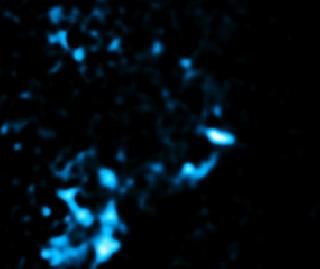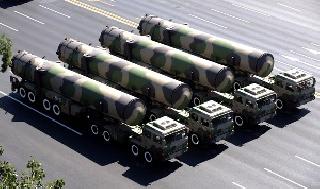
An unrelated photo of Sagittarius A*, or Sgr A*, the supermassive black hole at the center of the Milky Way galaxy.A NASA photo.
WASHINGTON (PTI): Astronomers have discovered one of the most powerful black holes ever known - in a galaxy cluster located about 3.9 billion light years from Earth.
The black hole has created enormous structures in the hot gas surrounding it and prevented trillions of stars from forming, researchers said.
The black hole in the galaxy cluster RX J1532 was found using NASA's Chandra X-ray Observatory and other telescopes.
The cluster is very bright in X-rays implying that it is extremely massive, with a mass about a quadrillion - a thousand trillion - times that of the Sun.
At the centre of the cluster is a large elliptical galaxy containing the supermassive black hole. The large amount of hot gas near the centre of the cluster presents a puzzle, researchers said.
Hot gas glowing with X-rays should cool, and the dense gas in the centre of the cluster should cool the fastest. The pressure in this cool central gas is then expected to drop, causing gas further out to sink in towards the galaxy, forming trillions of stars along the way.
However, astronomers have found no such evidence for this burst of stars forming at the centre of this cluster.
This problem has been noted in many galaxy clusters but RX J1532 is an extreme case, where the cooling of gas should be especially dramatic because of the high density of gas near the centre, researchers said.
Researchers set to find out what is stopping large numbers of stars from forming in RX J1532 and found two large cavities in the hot gas on either side of the central galaxy.
The location of the supermassive black hole between the cavities is strong evidence that the supersonic jets generated by the black hole have drilled into the hot gas and pushed it aside, forming the cavities, researchers said.
Shock fronts caused by the expanding cavities and the release of energy by sound waves reverberating through the hot gas provide a source of heat that prevents most of the gas from cooling and forming new stars.
The cavities are each about 100,000 light years across, roughly equal to the width of the Milky Way galaxy.
Although the energy to power the jets must have been generated by matter falling toward the black hole, no X-ray emission has been detected from infalling material.
This result can be explained if the black hole is "ultramassive" rather than supermassive, with a mass more than 10 billion times that of the Sun.
Such a black hole should be able to produce powerful jets without consuming large amounts of mass, resulting in very little radiation from material falling inwards.
Another possible explanation is that the black hole has a mass only about a billion times that of the Sun but is spinning extremely rapidly, researchers said.
Such a black hole can produce more powerful jets than a slowly spinning black hole when consuming the same amount of matter. In both explanations the black hole is extremely massive, researchers added.
 Previous Article
Previous Article Next Article
Next Article













The Indian Air Force, in its flight trials evaluation report submitted before the Defence Ministry l..
view articleAn insight into the Medium Multi-Role Combat Aircraft competition...
view articleSky enthusiasts can now spot the International Space Station (ISS) commanded by Indian-American astr..
view article